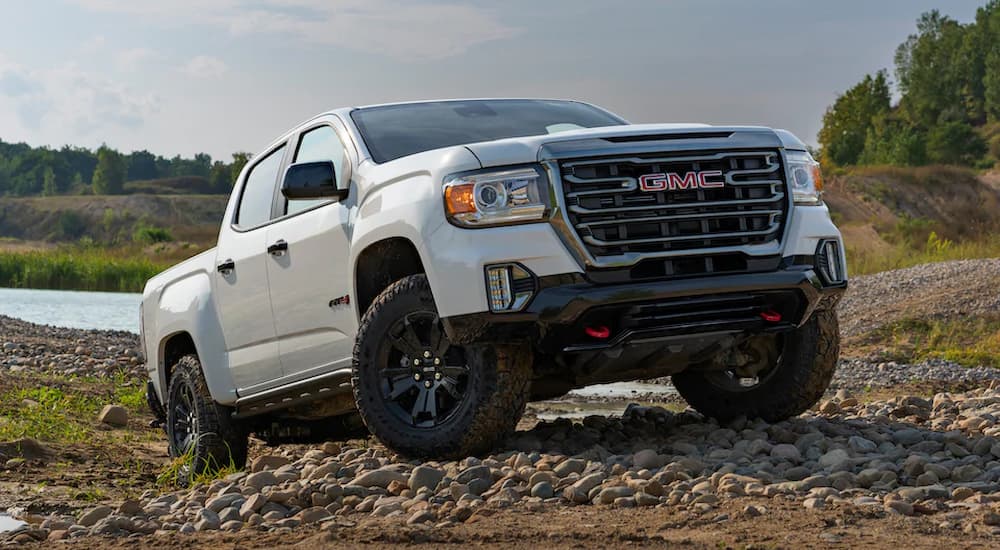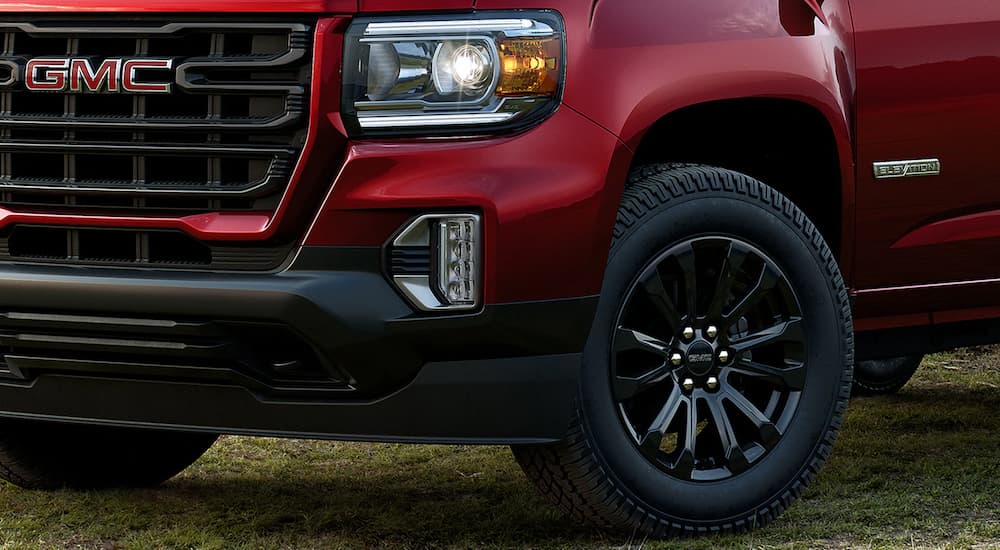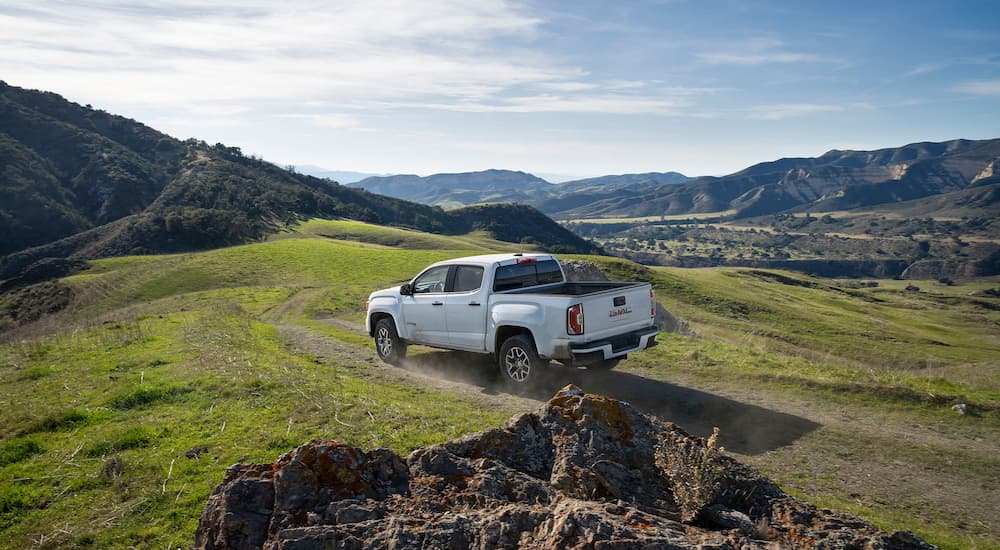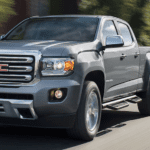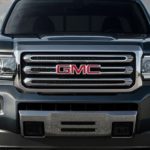The art of skillfully adhering to whatever is thrown at you properly showcases the layer of ingenuity in automotive suspension advancements engineered by the Multimatic Corporation. Along with brethren Chevy Colorado ZR2 (which is built alongside the Canyon in Missouri plants), the 2022 GMC Canyon will now utilize the highly advanced Multimatic Dynamic Suspensions Spool Valve (DSSV) suspension. Race-tested on the world’s most demanding circuits, this dampening suspension system is elevating off-road and everyday driving applications to new levels of performance. Advances in cost-effective engineering have allowed mainstream automakers like General Motors (GM) to embrace this emerging tech in vehicles such as the GMC Canyon.
Who Is Multimatic?
Multimatic is a transnational company headquartered near Toronto, Canada, with facilities in the U.S., Mexico, Japan, South Korea, China, and several in the United Kingdom. The company represents a unique and diverse business strategy that has progressed along with technology. Here’s a brief encapsulation of the various divisions, their inception periods, and key components that have helped make Multimatic a global enterprise of excellence in the new Millennia:
- 1984- Mechanisms Division: manufactures door and hinge systems, powered closures, highly advanced mechanisms, and aerodynamic systems.
- 1986- Structures and Suspension Division: leading-edge instrument panel, roof, bumper and rocker panel beams and structures, control arms (and links), ball joints, aluminum suspension components, and of course, the phenomenal DSSV system.
- 1989- Engineering Division: initially formed to assist the other entities, this became the backbone of what is now a sector that provides quality and innovation to a comprehensive list of worldwide customers.
- 1992- Motorsports Division: intrigued by the prospect of using racing platforms as a means of testing and perfecting products, the motorsports division became a reality and has gone on to compile an impressive resume.
- 2019- Niche Group: after years of success in revolutionizing suspension/chassis parts and components, the growing demand for high-end road cars prompted the Niche Group to break away from the Engineering Division. Multimatic Niche cars now have their own dedicated facilities in Canada and the U.K.
- 2020- Special Vehicle Operations Group: ground-up engineering of vehicles; works in conjunction with the Niche Group and the Motorsports Division as well.
Amazing DSSV Innovation
Replacing decades-old (but serviceable) shim technology in absorbing the shock of sundry road conditions was indeed an industry-changing transformation when it comes to suspension advancements. Traditional shim shock absorbers utilize an oil-filled, sealed tube with a piston inside. Said piston has holes covered with metal shims that essentially restrict movement as the vehicle’s suspension reacts to whatever road conditions it may encounter. Unfortunately, the shim variety has its limits when road conditions are less-than-optimal. In addition, the metal shims create inner-wear, compromising reliability and the shock’s ability to adequately perform over time.
The dampening capabilities of the spool-valve system exposed the shim absorber as a relatively low-tech application. Multimatic replaced the metal shim with a minuscule, spring-loaded valve which variably opens in response to the cylindrical component as it moves within the damper. This remarkably efficient design allows the damper to be easily precision-tuned with SpecFinder software by manipulating the size of circumferential ports, which controls the amount of oil allowed to pass through. Surprisingly accurate spool-valve configurations are just a few clicks away when selecting a desired dampening performance with the accompanying software. Dreaded days of extended trial-and-error were smashed with DSSV versatility. The end result is much greater control of the velocity-force curve when adhering to expected road conditions. A dampening system that independently controls the compression of impact and the ensuing rebound was destined to change the suspension game, but how did it materialize?
Engineering Challenges
After several years of disappointing results from traditional chassis and suspension options, Multimatic went all outside the box on common shock absorbers, embracing tech that was actually in place within other industries. After purchasing the English company Dynamic Suspensions in 1996, the foundation for a dampening reformation was now in place. Driven by a motivation to replace the limited shim absorber, Multimatic decided to incorporate spool-valve tech, which was successfully used in hydraulic directional control valve development elsewhere. That said, it wasn’t without its major obstacles. Larry Holt, Multimatic’s Chief Technical Officer, describes the challenge: “Think of a tiny little cylinder with a carefully shaped hole in its side which is opened by damper pressure against a tiny little spring with unbelievably challenging tolerances. A lot of companies would have given up after the first tolerance calculation, but we persevered.”
As the company relentlessly pursued its dampening vision, the missing piece of the puzzle came from the precision medical instrument industry with Electrical Discharge Machining (EDM). Adding this element put an end to shim technology (for Multimatic) and opened the door for ground-breaking spool-valve dampers to change the auto-suspension landscape.
Motorsports and High-End Cars
Although the turn of this century brought DSSV technology with it, the innovative system was only available in racing circles and high-performance vehicles. However, the impact on the auto world was immediate and swift. World-class tuners and engineers were now able to rely on suspension derived from an arithmetical substance, as Mutlimatic states here: “No more technicians, no more dynos to sort the characteristics, because it is all defined by a mathematical equation that fully predicts the response: give us what damper curve you want, and we’ll give you a spool!”
Naturally, this tech was like gold to racing leagues and platforms everywhere. The DSSV success story hit the radar with the 2002 Newman/Haas championship in the CART series – in their first year of employing this new technology. A too-numerous-to-list gaggle of championships and accomplishments include:
- Victories in the 24 Hours of Le Mans and 12-Hours of Sebring races
- GT Racing team and driver championships
- FIA World Endurance Championships
Perhaps their greatest accolade is four consecutive championships in the world’s most intricate racing series. The Red Bull Racing Team – after embracing DSSV/ Multimatic suspension components – won four consecutive Formula One (F1) championships!
Multimatic’s unrivaled ability to design, develop, engineer, build and race at the highest levels of competition was attractive to road car manufacturers looking for a distinctive edge. Not only does Multimatic build entire racing and prototype concept cars, but they also work closely in design and development with some big names in the high-end performance market. You can find Multimatic technology instrumental or standard on brands such as Porsche, Jaguar, BMW, Ferrari, and Aston Martin. Oh, and let’s not forget the Chevy Corvette ZR1, Camaro Z28/ZL1, and the Chevy Colorado ZR2.
Welcome to the 2022 Canyon
Joining the impressive pound-for-pound Baja taming Chevy Colorado ZR2, the GMC Canyon has its eye on this growing segment by firing a shot across the bow with the 2022 AT4 OVRLANDX concept off-road package. Taking a cue from the rugged ZR2 Bison trim, additions to the AT4 package – such as rocker panel guards, cast-iron control arms, a custom front bumper (with integrated winch), and front/mid skid plates – signals future aspirations for this line of trucks. With game-changing technology like available DSSV and the implementation of proven off-road features, the mid-sized GMC pickup seems well-placed to garner attention. For those in the market, the 2022 GMC Canyon is worth a long look.
